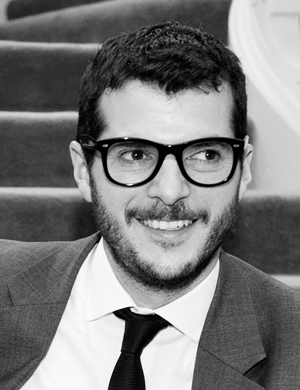Russell tells us everything, from what makes a good photograph, to why we should be tearing down our Keep Calm and Carry on posters.
Whether it was your latest celebrity crush, rock band obsession or your favourite movie scene, everyone has had at one time or another, an iconic photo hung up on their wall. But how many can say that their chosen image was a genuine photo? With original copies going for thousands, it’s most likely that the famous photos plastered around our homes are of the veneer poster type.
It was this extensive gap between the glossy gallery original and its cheap poster counterpart that inspired Russell Blackmore, co-founder of Notting Hill-based Sonic Editions, to offer a middle-ground alternative.
Why did you start Sonic Editions?
We started Sonic Editions in December 2009, as we felt there was a gap in the market between the photographic galleries (where you’re looking at paying over a grand, plus framing) and the venerable poster in a cheap clip frame. Our aim was to democratise fine art photography by simplifying the process and making it more affordable. Our prints are gallery quality, limited editions and are hand-printed and framed, but because they are not signed by the photographer we’re able to sell framed prints from £69.
How do you source the original pictures?
We work with a range of photographers and archives to source the images, as well as working with magazines like The NME, with whom we have an exclusive deal to sell their commissioned photography.
How are the photographic prints made?
All prints are hand-printed to order; they are gallery quality C-Type prints or Giclees on Fuji Crystal Archive Paper. They are then framed in handmade wooden frames and couriered to the customer.
What is your most popular print subject?
All the major artists you’d expect to sell well have sold well. We offer a very wide choice, but we sell a lot of the Beatles, Michael Caine, Led Zeppelin, Neil Young and Sean Connery. Surprisingly though, our portrait of Daft Punk (above) is one of the best selling shots on the site.
Have you any new projects coming up?
We have a new collection curated by The Impossible Cool (an immensely popular photography blog). We’re really excited about it, as we spent a day in the Getty Archives in LA with the founder of The Impossible Cool, Sean Sullivan to dig out some unseen gems for the new collection.
What do you think makes a good photo?
It’s all about access, and making the subject feel relaxed and comfortable. These days the access is tough. In the ’60s and ’70s photographers went on tour with bands and were able to photograph them whenever they liked, so you got a real feeling for the subject and the band. Nowadays it’s all controlled by publicists who give you 15 minutes.
Is there an iconic picture that you wish you had taken?
I love Ed Feingersh’s series of shots of Marilyn Monroe on a day in New York in 1955. They capture the real her, in a way you’ve never seen before – on the subway, in a favourite restaurant – completely natural.
What do you think a good photographic print brings to an interior’s design?
I think it personalises a room beautifully and allows you to put your stamp on it. It also says a lot more about you than another Keep Calm and Carry On poster.
What should people consider before buying a Sonic Editions print?
The only thing you need to consider is how many of them you need. Grouping a bunch of smaller images on a wall looks great, rather than one large print; mix and match between colour and black and white with different frames for the best effect.











